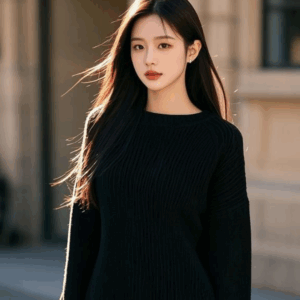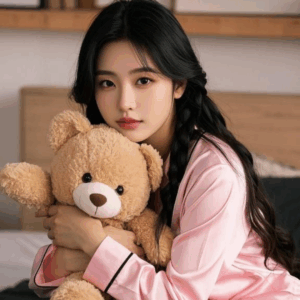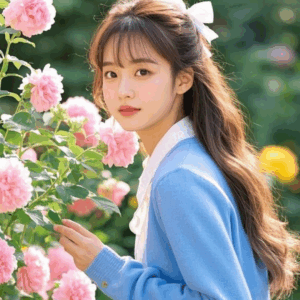Where Art Meets AI: Stunning Female Faces Born of Tech
Delve into the captivating world where art and technology collide, giving birth to breathtaking female faces crafted by AI. Brace yourself for a journey filled with innovation and creativity as we explore this fascinating intersection.Detailing the advancements in AI technology for creating realistic female faces and comparing them to traditional art forms, this topic promises to captivate and inspire.
 Artificial Intelligence (AI) has revolutionized the way art is created, giving rise to a new form of artistic expression known as AI-generated art. This innovative approach involves using algorithms and machine learning to produce artworks that blur the lines between human creativity and technological advancement.The intersection of technology and art in AI-generated pieces allows for the exploration of unique concepts, styles, and techniques that may not have been possible through traditional means.Artists can now harness the power of AI to generate stunning pieces that push the boundaries of creativity and imagination.
Artificial Intelligence (AI) has revolutionized the way art is created, giving rise to a new form of artistic expression known as AI-generated art. This innovative approach involves using algorithms and machine learning to produce artworks that blur the lines between human creativity and technological advancement.The intersection of technology and art in AI-generated pieces allows for the exploration of unique concepts, styles, and techniques that may not have been possible through traditional means.Artists can now harness the power of AI to generate stunning pieces that push the boundaries of creativity and imagination.
 AI technology has significantly advanced in generating realistic female faces over the years. With the use of deep learning algorithms and neural networks, AI models are now capable of creating highly detailed and lifelike portraits that closely resemble actual human faces.
.
AI technology has significantly advanced in generating realistic female faces over the years. With the use of deep learning algorithms and neural networks, AI models are now capable of creating highly detailed and lifelike portraits that closely resemble actual human faces.
.
 AI-generated art is revolutionizing the art industry by offering new ways for artists to create and innovate. The introduction of AI in art has sparked discussions about the intersection of technology and creativity, challenging traditional notions of what constitutes art.
AI-generated art is revolutionizing the art industry by offering new ways for artists to create and innovate. The introduction of AI in art has sparked discussions about the intersection of technology and creativity, challenging traditional notions of what constitutes art.
Introduction to AI-generated Art
 Artificial Intelligence (AI) has revolutionized the way art is created, giving rise to a new form of artistic expression known as AI-generated art. This innovative approach involves using algorithms and machine learning to produce artworks that blur the lines between human creativity and technological advancement.The intersection of technology and art in AI-generated pieces allows for the exploration of unique concepts, styles, and techniques that may not have been possible through traditional means.Artists can now harness the power of AI to generate stunning pieces that push the boundaries of creativity and imagination.
Artificial Intelligence (AI) has revolutionized the way art is created, giving rise to a new form of artistic expression known as AI-generated art. This innovative approach involves using algorithms and machine learning to produce artworks that blur the lines between human creativity and technological advancement.The intersection of technology and art in AI-generated pieces allows for the exploration of unique concepts, styles, and techniques that may not have been possible through traditional means.Artists can now harness the power of AI to generate stunning pieces that push the boundaries of creativity and imagination.
Examples of other AI-generated art forms
- DeepDream: An AI-generated art form that uses neural networks to transform images into dream-like creations.
- StyleGAN: A cutting-edge AI technology that generates realistic and diverse human faces based on input data.
- AI-Enhanced Photography: AI algorithms can enhance and manipulate photographs to create visually striking and surreal images.
- Generative Adversarial Networks (GANs): GANs are used to create art pieces by pitting two neural networks against each other to generate new and unique content.
Evolution of AI in Creating Female Faces
 AI technology has significantly advanced in generating realistic female faces over the years. With the use of deep learning algorithms and neural networks, AI models are now capable of creating highly detailed and lifelike portraits that closely resemble actual human faces.
AI technology has significantly advanced in generating realistic female faces over the years. With the use of deep learning algorithms and neural networks, AI models are now capable of creating highly detailed and lifelike portraits that closely resemble actual human faces.
Advancements in AI Technology
- Facial Recognition: AI systems now have the ability to analyze facial features such as eyes, nose, and mouth to accurately recreate human faces.
- Texture Mapping: Improved texture mapping techniques allow AI-generated faces to have realistic skin tones, wrinkles, and facial expressions.
- Style Transfer: AI can now apply different artistic styles to generated faces, creating unique and visually appealing portraits.
Training AI Models
Training AI models to create human-like features involves feeding them with a large dataset of facial images. These models learn to recognize patterns and features in the data, enabling them to generate new faces with similar characteristics. Through a process called generative adversarial networks (GANs), AI systems can refine their output to produce more realistic and diverse female faces.Quality Comparison
The quality of AI-generated female faces has reached a level where it can be challenging to distinguish them from traditional art. AI models can produce portraits with intricate details, realistic expressions, and diverse styles, showcasing the potential of technology in the field of art and creativityImpact on the Art Industry
 AI-generated art is revolutionizing the art industry by offering new ways for artists to create and innovate. The introduction of AI in art has sparked discussions about the intersection of technology and creativity, challenging traditional notions of what constitutes art.
AI-generated art is revolutionizing the art industry by offering new ways for artists to create and innovate. The introduction of AI in art has sparked discussions about the intersection of technology and creativity, challenging traditional notions of what constitutes art.
Changing Landscape of the Art Industry
- AI-generated art has opened up new possibilities for artists to explore unconventional techniques and styles.
- Artificial intelligence has the potential to democratize art creation by providing accessible tools for aspiring artists.
- The use of AI in art has led to collaborations between artists and technologists, fostering a new wave of interdisciplinary creativity.
Reception of AI-generated Female Faces in the Art World
- AI-generated female faces have garnered attention in the art world for their unique blend of human-like features and digital aesthetics.
- Some artists embrace AI as a tool for enhancing their artistic vision, while others view it as a threat to traditional artistic practices.
- Critics argue that AI-generated art lacks the emotional depth and intentionality of human-made art, raising questions about the authenticity of machine-generated creations.
Implications of AI in Creativity and Artistic Expression
- AI challenges the notion of authorship in art, blurring the lines between human and machine creativity.
- The use of AI algorithms in art creation raises ethical questions about the role of technology in shaping artistic expression.
- AI tools allow artists to experiment with new techniques and approaches, pushing the boundaries of traditional art forms.


